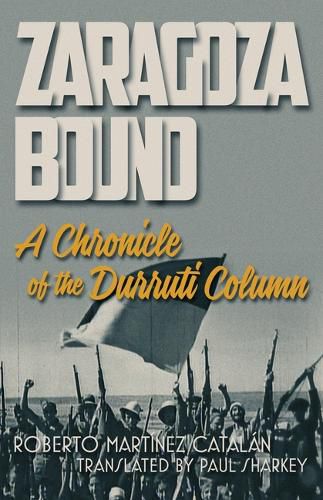Readings Newsletter
Become a Readings Member to make your shopping experience even easier.
Sign in or sign up for free!
You’re not far away from qualifying for FREE standard shipping within Australia
You’ve qualified for FREE standard shipping within Australia
The cart is loading…






On July 24, 1936, one week after the Spanish working class took up arms against General Franco's fascist coup an armed column, comprised primarily of partisans from the anarcho-syndicalist CNT, left Barcelona. Leading this militia was Buenaventura Durruti, the most famous anarchist in Spain. Durruti and his compatriots had just participated in the street fighting that temporarily defeated Franco's military uprising. Now they were heading to Zaragoza, an important CNT stronghold whose liberation would represent a decisive advance for the war and the revolution. On the way, the Column sought to establish free communes outside the control of the brittle Republic, while confronting the fascist advance. The roughly seven thousand members of the column were organized without traditional military hierarchy, thus establishing a true anarchist military formation based on solidarity and common purpose. Zaragoza Bound chronicles the column's battles, membership, and organization. From its creation to its dissolution and integration into the Popular Army of the Republic in 1937, heroic episodes of the Durruti Column are recounted without shying away from hardship and controversies.
$9.00 standard shipping within Australia
FREE standard shipping within Australia for orders over $100.00
Express & International shipping calculated at checkout
On July 24, 1936, one week after the Spanish working class took up arms against General Franco's fascist coup an armed column, comprised primarily of partisans from the anarcho-syndicalist CNT, left Barcelona. Leading this militia was Buenaventura Durruti, the most famous anarchist in Spain. Durruti and his compatriots had just participated in the street fighting that temporarily defeated Franco's military uprising. Now they were heading to Zaragoza, an important CNT stronghold whose liberation would represent a decisive advance for the war and the revolution. On the way, the Column sought to establish free communes outside the control of the brittle Republic, while confronting the fascist advance. The roughly seven thousand members of the column were organized without traditional military hierarchy, thus establishing a true anarchist military formation based on solidarity and common purpose. Zaragoza Bound chronicles the column's battles, membership, and organization. From its creation to its dissolution and integration into the Popular Army of the Republic in 1937, heroic episodes of the Durruti Column are recounted without shying away from hardship and controversies.